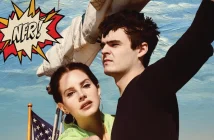For many families, the films we watch around Christmas are as much traditions of the season as any other ritual, be it family or food or friends. But we can get a little tired, after a few years, of trotting out the same seasonal stories. So wether you want to replace your normal viewing, or watch something different as well, James Slaymaker has some ideas for different watching over the next few days.
Eyes Wide Shut (1999)
One of the most luminous movies ever made, Kubrick’s Eyes Wide Shut is an expressionistic, oneiric dark comedy that’s equal parts sociological study and metaphysical love story. A fairly conventional noir premised is teased, but it mostly exists as little more than a catalyst for an paranoid, labyrinthine, Rivetteian drama, with the central mystery spiralling exponentially outwards rather than being gradually resolved. Set almost entirely over a single night, Eyes Wide Shut follows the reliably anticlimactic misadventures of Dr Bill Harford as he paces around Manhattan after his wife Alice admits to fantasising about other men. Unsure of how to respond, the mostly passive Bill comes across a series of uncanny encounters in which his own fidelity is tested, regarding each woman with a mixture of desire and fear, all the while trying to retaining his detached, logic-based outlook.
Kubrick structures the around frustration – each encounter is cut short by some external force, which becomes a way for Bill to evade having to make a moral decision. Having spent the whole of his life coddled, Bill’s existential crisis is set off by the sudden realization that the way others perceive him may not necessarily fall in line with his own self-image, and it’s impossible to know what another person is truly thinking. Yet, this unique blend of searing pessimism and deeply felt humanism ends on a note of hope, ultimately re-affirming the value of the compromises and wilful blindness necessary to keep a long-term relationship afloat.
My Night at Maud’s (1969)
Eric Rohmer is one of the French New Wave’s most consistently overlook voices – he makes talky, intricate character studies that usually set up a simple moral conundrum and then track its effects as it weighs down on the mind of his protagonist. In My Night at Maud’s, said figure is Catholic Jean-Louis, who is invited by his more carnal friend Valentin to spend Christmas Eve with him and the free-spirited Maud. Jean-Louis, like most Rohmer leading men, is an introverted narcissist who disguises his passivity and lack of backbone as principle, and when Maud begins to come on to him he denies his attraction by seeing her as an obstacle sent to test his faith. Complicating matters is his loyalty to his long-term object of desire, Francoise, who he impossibly idealizes despite having had very little contact with her. Jean-Louis prides himself on his self-restraint and treats faith, like everything else, as a matter of logistics: you have little to lose by practicing and a lot to gain. He uses Pascal’s scientific philosophies to guide him through his personal life. Rohmer is an expert at painting how people rationalize their flaws. The slight plot unfolds in a series of delicately drawn-out dialogues. Rohmer’s camera remains locked at a distance, capturing them in lengthy masters and two-shots with such forceful precision that the geometry itself becomes an expression of interiority.



